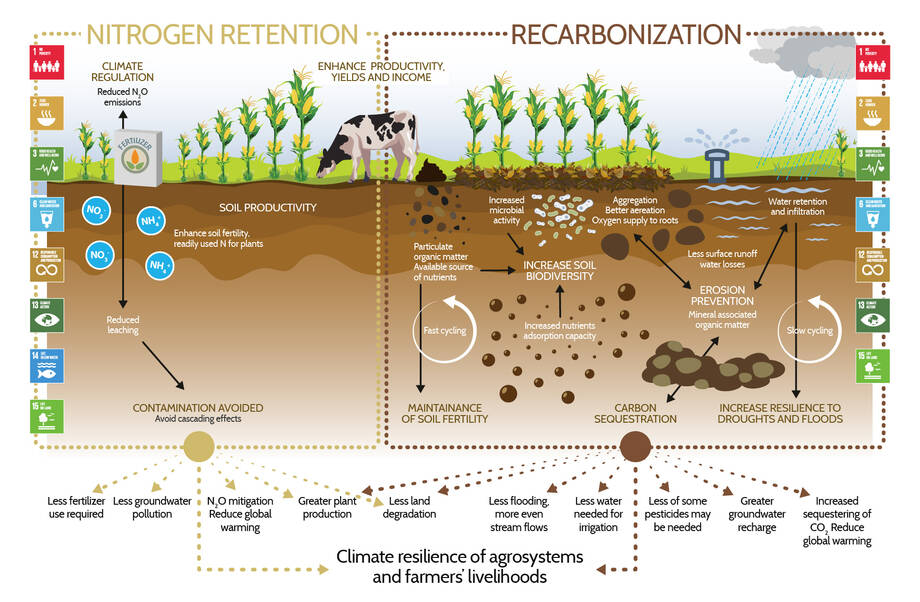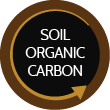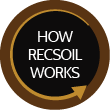RECSOIL: Recarbonization of Global Agricultural Soils
There is a collective call from all corners of the world to decarbonize the economy. Our response is to recarbonize global agricultural soils!
What is soil organic carbon (SOC)?
Soil is not just soil but a complex matrix of interacting components: mineral particles, air, water, organic matter and living organisms.
Soil organic matter (SOM) is the portion of organic residues in soil in various stages of decay. Despite being a small part of the soil matrix, the presence of SOM contributes significantly to soil health. Thanks to its chemical and physical properties, SOM retains large amounts of water and nutrients, which helps maintain and increase soil biodiversity, improve water and nutrient availability, and reduce erosion and leaching.
The main component of SOM is carbon, also known as soil organic carbon (SOC). This carbon constitutes the largest terrestrial carbon pool and makes soils integral to our planet's carbon cycling. On a global scale, the top 30 cm of soil contains more carbon than the atmosphere and vegetation combined.
The Intergovernmental Technical Panel on Soils (ITPS) defines soil health as "the ability of the soil to sustain the productivity, diversity, and environmental services of terrestrial ecosystems". SOC is an essential ingredient allowing soils to provide these services, making it a key indicator of soil health.
Healthy soils contribute to the following:
- food security, nutrition, and farm livelihoods;
- essential ecosystem services;
- meeting the Sustainable Development Goals (SDGs);
- mitigating against climate change; and
- agricultural resilience to extreme climatic events.
Soil organic carbon (SOC) sequestration
Soil sequester carbon when more carbon is added to the soil than is lost through decomposition or runoff. This is achieved by implementing sustainable soil management (SSM) practices, targeting increased organic matter inputs and protecting existing soil carbon.
Carbon sequestration and nature-based solutions can potentially compensate for hard-to-abate emissions. According to the Global Soil Carbon Sequestration map, global soils have the potential to sequester 0.14–0.57 Pg C per year. In addition, SOC sequestration presents an opportunity to boost investment in soil health, sustainable development, and farmers’ livelihoods.
The sequestration potential and interventions necessary depends on local specific conditions, but might include improved soil cover, composting, crop diversification, or reduced tillage.







